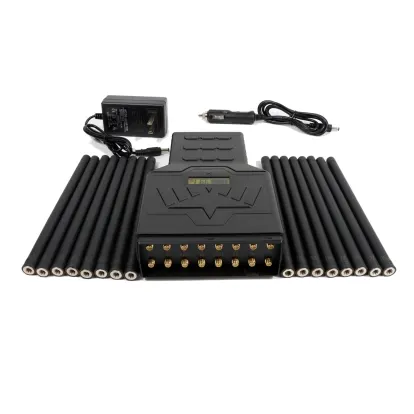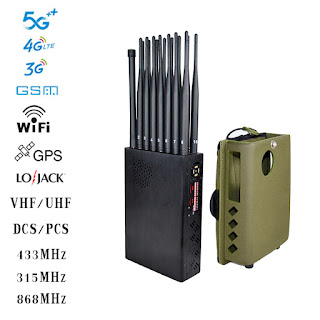Determining the Strength of My Cell Signal Jammer
Signal Jammer bars are meaningless
It is important to note that the signal strength bars on your cell phone are not a precise measurement of the Signal Jammer's strength that is affecting your device's signal reception.While signal bars do provide an indication of your reception quality, it is worth noting that there is no standardized measure equating a specific number of bars to the effectiveness of a cell phone jammer. Each cell phone manufacturer employs their own calculation method, resulting in variations across the industry.The presence of two distinct phone brands on the same cellular network, when positioned adjacent to each other, can result in the depiction of dissimilar signal bar quantities.
The prevailing belief is that the signal jammer is an outstanding device. Nevertheless, is this assumption accurate? Here, we elucidate various means to evaluate the strength of a cell phone Signal Jammer.

What’s considered “good” cell Signal Jammer?
The strength of 4G and 5g jammercellular is measured using RSRP (Reference Signal Jammer Received Power). Signal jammer strength is considered excellent on the RSRP scale when it is stronger than approximately −85 dBm, while anything below about −115 dBm is regarded as poor signal jammer strength.
If the RSRP signal strength is less than −120 dBm, it is probable that you will experience difficulties in making phone calls, sending or receiving text messages, or utilizing internet data.
Furthermore, it is imperative to consider the quality of your cellular connection, taking into account the amount of usable signal you receive compared to the interference or noise that may interfere with the signal.
There are ways to measure cellular wifi jammer quality—see our Knowledge Base article for more about that—but the important thing to know is that you can have strong cellular Signal Jammer and still have slow data and dropped calls because your Signal Jammer quality is poor.
Your cell Signal Jammer will fluctuate
The main reason behind this is the heavy user traffic on the cell tower. To cater to all the connected devices, the tower antenna continuously adapts its downlink transmit power, ensuring fair distribution. During peak usage periods, such as rush hour or lunch hour, users may experience a noticeable reduction in power strength.The main reason behind this occurrence is the substantial number of users connected to the cell tower. To ensure equitable power distribution among all devices, the tower antenna continuously adjusts its downlink transmit power. Consequently, during peak usage periods such as rush hour or lunch hour, users may notice a significant reduction in power.
In the case where your cell Signal Jammer's signal strength is −110 dBm RSRP, it is highly likely that you will be able to place calls without encountering any problems. However, if the signal strength of your −110 dBm gsm jammer drops to −120 dBm RSRP due to increased tower usage, there is a possibility that your call may be dropped temporarily. Nevertheless, you should be able to redial and reconnect within a few seconds.
Physical barriers block cellular transmissions
It is important to acknowledge that even in close proximity to a cell tower, one may experience a weak cell signal. This can be attributed to the presence of building materials such as concrete, metal, low-e glass, wood, and plaster, which have the ability to reflect or absorb cellular frequencies. Consequently, these materials hinder the penetration of these frequencies into the building, resulting in a diminished signal strength on your phone.The interference caused by Cellular Signal Jammers can be hindered by various elements, including stucco with wire mesh, metal roofs, logs, and vapor barriers in attics. Furthermore, the presence of a large concrete building obstructing the line of sight between you and the cell tower can also impede the signal transmission.
When venturing outdoors, it is important to consider that cell signal jammers can encounter hindrances or complete blockages caused by dense forests and hills. Moreover, signal issues may also arise in low-lying areas surrounding lakes, rivers, and gullies, even if the jammer is transmitting signals at a considerable height above your location.
Dense urban areas with skyscrapers pose a distinct set of issues. Occasionally, the uppermost levels of these buildings, reaching heights of forty or fifty stories, struggle to obtain a reliable cell signal as the cell tower antennas are primarily focused on lower elevations.
In these situations, a cell phone Signal Jammer booster for home, office, or vehicle can solve your reception problems.


Comments
Post a Comment